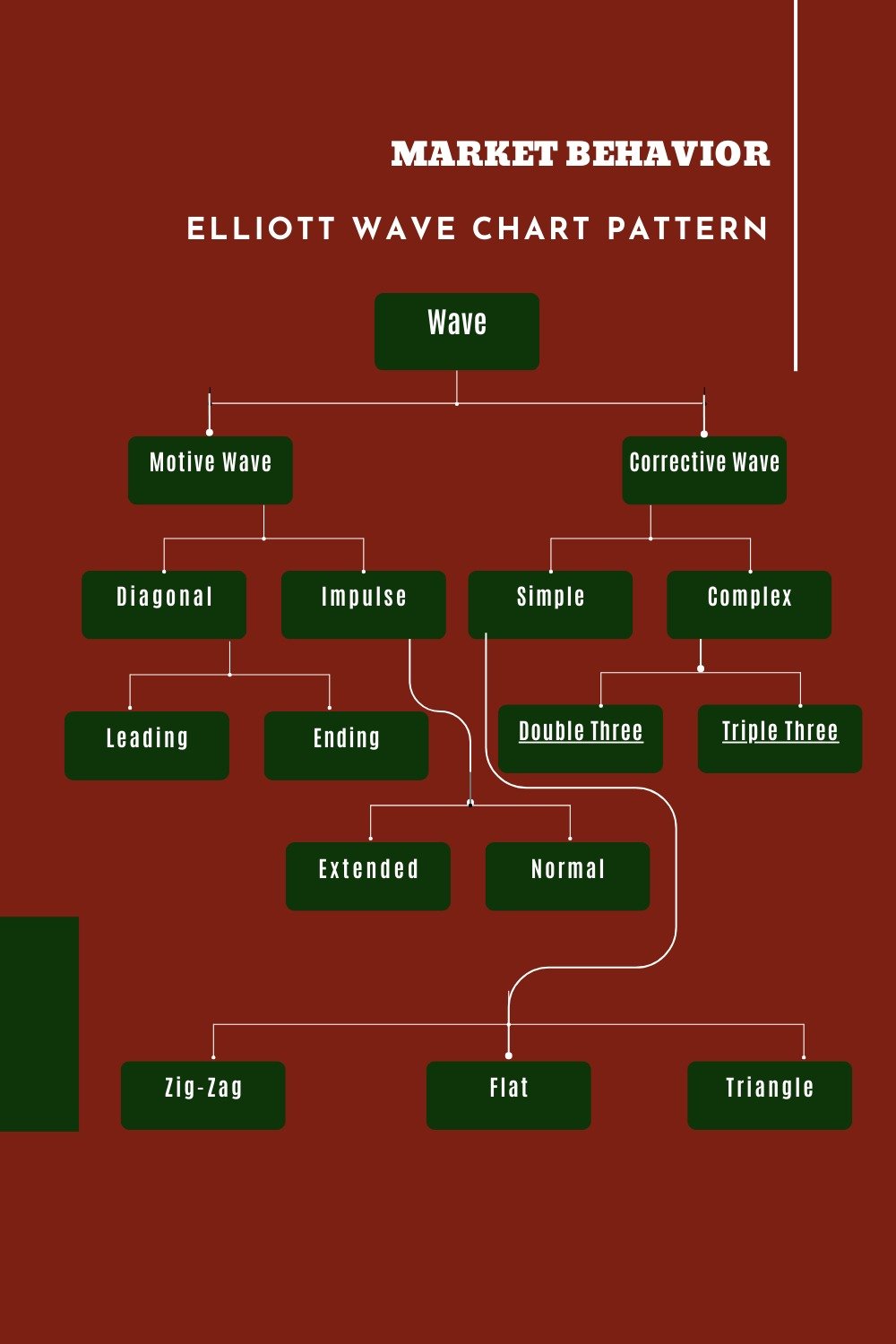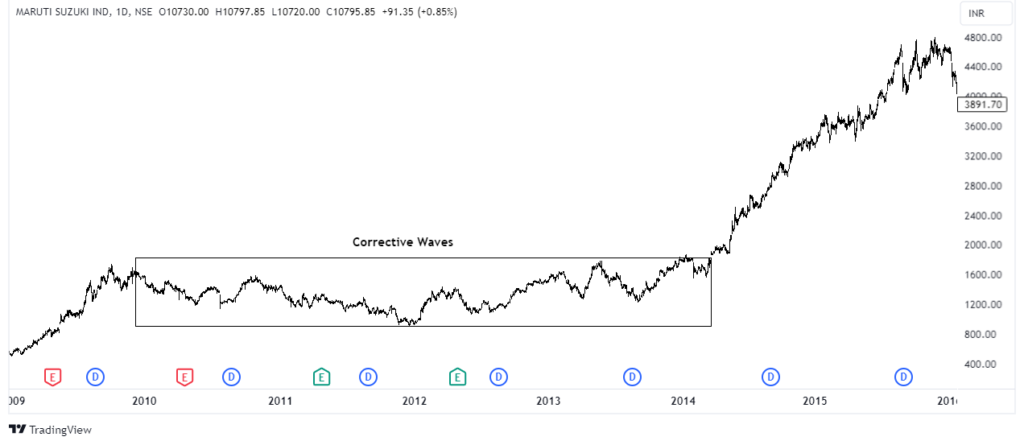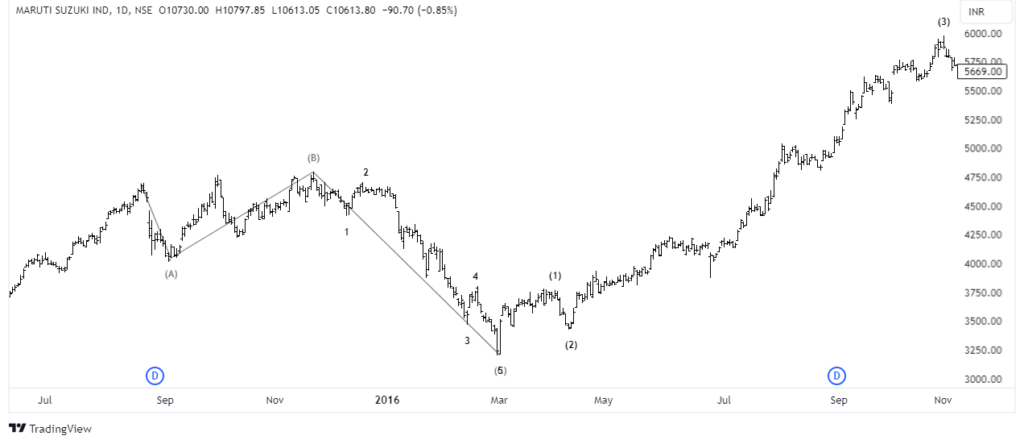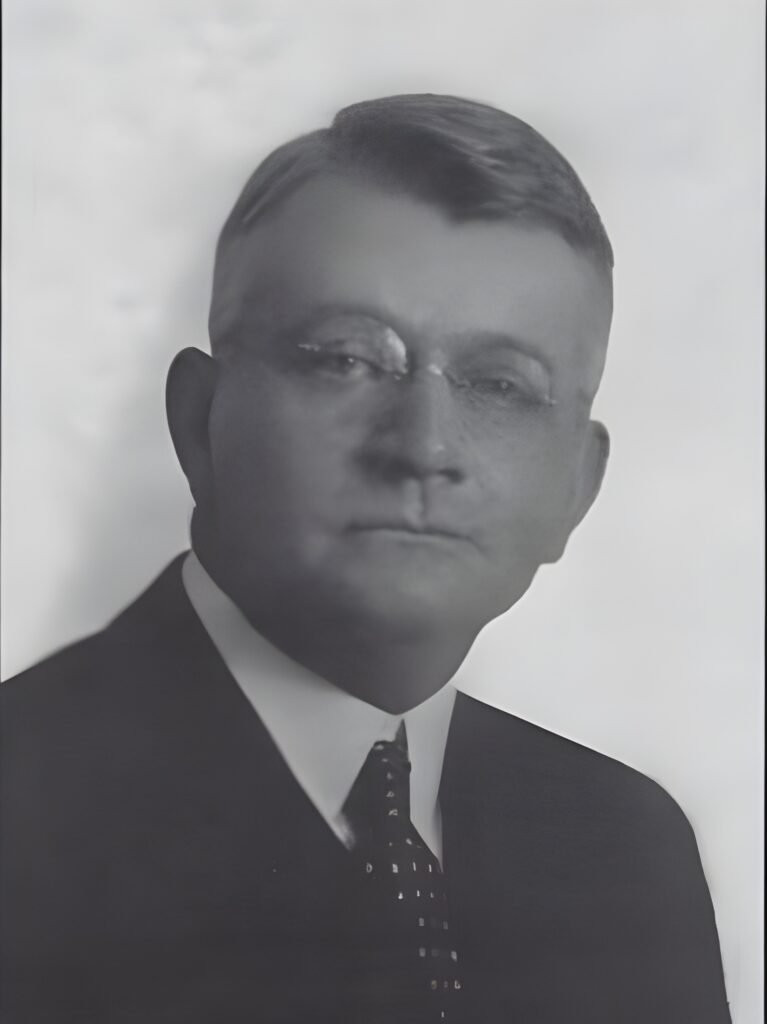The Elliott Wave Theory is a framework for market analysis that emphasizes the distinction between motive waves and corrective waves. Motive waves are characterized by rapid price fluctuations, which reflect strong market sentiment, whereas corrective waves consist of overlapping price movements. This theory is useful for predicting future market trends and identifying potential opportunities for entry and exit.
In Short
It’s no secret that Elliott Wave Theory isn’t always straightforward to understand. According to many traders, wave patterns are extremely difficult to use for accurate trading.
Still, if you’re even somewhat familiar with wave theory, you’ll be able to see patterns in any price chart, particularly when looking at the bigger picture.
What precisely is Elliott Wave Theory?
Finding patterns in charts is the key. Looking at a chart over a longer time frame will reveal clear wave patterns. Counting these waves correctly will make anticipating future price fluctuations much easier.
Market Behavior
So, what matters so much? The Elliott Wave Theory relies on patterns to analyze market behavior. If your earlier counts were accurate, you could confidently forecast how prices will go in the future. But you’ll need a skilled eye for detail to do this. At each stage, you must ensure that every condition of the price movement is met.
Understanding market behavior only requires mastery of chart patterns. Strengthening your skills in understanding chart patterns is all that’s required.
From a distance, observing a price chart pattern reveals two main types of price movements. According to Elliott Wave theory, the market displays two distinct types of waves:
1. Motive Wave (Trend)
Characteristics
During a motive wave, the asset’s price grows substantially and swiftly in a relatively short amount of time, indicating a strong and speedy price movement with a clear direction. This kind of sudden shift in pricing usually comes with an equally obvious trend, either rising or falling, so it’s simple to see.
This trend, with rising trade volume and a clear directionality in price action, is indicative of strong market sentiment. Traders’ confidence and dedication reinforce the trend’s authenticity and potential endurance, as evidenced by its momentum.
A rise in trade volume during a motive wave indicates significant market activity. As a result, the trend is becoming stronger and more reliable as more traders and investors actively buy and sell the asset.
When there is a lot of trading going on, it means that the market is confident in the direction the movement is taking. This increased activity strengthens the robust and likely-to-continue price movement, as the substantial volume demonstrates significant interest and support for the current trend.
Behavior
Whether the trend is going up or down, this wave shows that prices are moving consistently without any reversals, so it’s simple to see. At this point in the trend, the price is clearly moving in one of two directions: up or down.
The steady and unmistakable price trajectory makes it simple for traders to identify and follow the dominant trend. Either buyers or sellers are dominating the market and driving prices in a sustained way, as shown by the trend’s sharp direction.
Significant price changes, which validate the trend’s strength, typically follow. After the initial, highly-decisive price action in a motive wave, subsequent price moves typically reinforce the trend by following the same direction.
All these changes show that the first trend was more than a passing fad; it was a major and long-lasting change in market attitude. Consistently large price rallies give traders more reason to hold on to their bets on the direction of the wave since they indicate a robust and trustworthy trend.
2. Corrective Wave (Correction)
Characteristics
During a corrective wave, as opposed to a motive wave, the price movements tend to overlap rather than follow a clear and decisive trend. This lack of coherence gives the market a sense of indecision, while the lower trading volume suggests less market participation and weaker momentum.
Less buying and selling activity means slower price action. Consequently, price changes are more gradual and sluggish, reflecting a period of consolidation or hesitation among traders. In essence, the market is taking a breather and reevaluating its direction.
Behavior
In a corrective phase, which follows a long price rally, the market goes backwards and retraces some of the previous trend. During this time, the market relaxes after the preceding trend’s quick and abrupt swings. Price retracements, or flattening out, allow the market to regroup and assess the situation.
The retracement serves to dissipate excess momentum and prepares the way for prospective subsequent movements, which may involve returning to the initial trend or suggesting a probable reversal.

How Many Types of Wave?
The Elliott Wave Principle, which is essential for analyzing market activity, differentiates between two primary wave types: motive waves and corrective waves.
Forced trends with rapid, unambiguous price fluctuations define motive waves, suggesting significant directional momentum. Corrective waves, on the other hand, represent a period of consolidation following a large price gain and are characterized by reduced trading volume, slower, and overlapping price actions.
The investor may analyze market trends and corrections using this comprehensive framework that includes these two wave patterns.

Finding a motive wave is the first step to massive gains. This is because long price rallies indicate motive waves. You can increase your trading profits by recognizing and riding these motive waves. Read more…
Elliott Wave Chart Pattern
How Do You Read the Elliott Wave Chart?
Whether you’re looking at a stock, future, option, commodity, or currency price chart, you’ll see two separate phases: the directional (motive) phase and the corrective phase. Throughout the corrective phase, there is no distinct direction in the price fluctuations; instead, they overlap. It usually means the current trend is coming to an end and a new motive phase is starting, so now is the time to be patient and think about taking profits. Be ready to profit from the next popular trend.

The next motive phase, when prices are moving slowly and overlapping, might be a favorable time to cash in. According to wave theory, corrections consume the majority of market time. Because of this, traders need to be patient for long periods of time before they can profit again. Be ready to cash out when the market enters a new, strongly directed phase, so keep an eye out for these overlapping, corrective price swings.
How to Identify (Wave)?
Observe the completion of the three waves in a correction (A, B, and C) to identify its finish and notify the following motive phase. Note that Wave C, the final phase of the correction, comprises five sub-waves.
If you want to know when to get in the market, knowing that Wave C is over will give you a favorable idea of when the next motivation phase will begin. By closely monitoring these trends in chart patterns, you can enhance your ability to anticipate market movements and make informed trading decisions.

A consistent price movement through waves 1–5 characterizes the motive wave, which begins after the corrective phase. During this stage, Wave 3 is important because it typically involves a spike in trading volume and a quick rise in price. When there is a lot of volume and prices change quickly, it makes for a favorable trading situation. Consequently, traders sometimes go through a “honeymoon period” during Wave 3, when there are plenty of possibilities to benefit from the strong and unambiguous trend. This time must be taken advantage of to maximize trades.
What Are the Characteristics of the Elliott Wave?
Movements within the motive wave—more especially waves 1–5, which progress in the direction of the main trend—define the Elliott Wave’s characteristics.
Wave 3, often referred to as the ‘heart’ of the motive wave, stands out among these due to its high energy and extensibility. Typically, this wave exhibits the strongest trend and presents favorable trading opportunities due to its robust and consistent price action. Traders who want to profit from the strongest part of the motive wave must understand how Wave 3 works.

A corrective phase consisting of waves A, B, and C follows the motive wave. Wave A begins to travel counter to the first sign of a trend reversal. Wave A begins to travel counter to it. As a result, Wave B rectifies this motion by providing a partial return.
Last but not least, the most powerful corrective sub-wave, Wave C, generally reverts back to the trend direction. According to Elliott Wave theory, which describes the inherent regularity of market cycles, this alternating pattern shows how corrections and directional moves constantly interact with one another.
The motive wave’s waves 1, 3, and 5 all extend in the same direction as the trend. In contrast, Waves 2 and 4 are subject to corrections. Each motive wave follows this structure, starting with waves 1–5 and ending with waves A–C for correction. This pattern, based on wave theory, represents the market cycle, showing how the market goes through trends and corrections.
Ralph Nelson Elliott’s intriguing theory assists traders in entering, exiting, and following trends. Imagine a trading strategy that aligns with your preferences and maximizes profits using straightforward methods. Read more…
How Elliott Wave Chart Patterns Revealed the Market’s Psychology
Fear ruled Wall Street after the 2008 global financial crisis. The S&P 500 had lost over 50% of its value, leading most investors to believe that the markets would take years or even decades to recover.
March 2009 saw something intriguing. A sudden rally surprised everyone. Elliott Wave traders saw that the bear market had completed a five-wave downward structure and that the bounce looked like the start of a new impulsive wave pattern, while the media was skeptical.
The market recovered and went on a historic bull run in the following years. Those who understood Elliott Wave chart patterns saw this as the start of a mass psychology-driven cycle:
- The despair experienced at the end of Wave 5,
- The skepticism during Wave 1,
- The uncertainty during Wave 2,
- The explosive optimism of Wave 3.
This compelling real-world narrative demonstrates
- Elliott Wave chart patterns illustrate the influence of human emotions and collective behavior on market movements.
- Even amidst chaos, market movements frequently follow discernible wave structures.
- Identifying those patterns early allows you to capitalize on the trend while others remain uncertain.
Wave Theory
Ralph Nelson Elliott developed Elliott Wave Theory, a crucial component of technical analysis, in the 1930s. According to this idea, market movements follow repeating patterns symbolized by waves.

Ralph Nelson Elliott
Markets change in cycles of optimism and pessimism, developing motive waves and corrective waves. These patterns, which are designated numerically and alphabetically, assist traders in anticipating future market moves and identifying potential entry and exit opportunities. R.N. Elliott’s seminal work has since become a cornerstone of technical analysis, providing significant insights into market behavior and trend formation.
Final Thoughts
This is our view just for information and education purpose only. Have you ever attempted to apply Elliott Wave patterns? What do you think? How effective is the Wave Theory in the field of investment? Feel free to share your opinions in the comment box below.
FAQs
What are the patterns of the Elliott wave?
The Elliott Wave Theory categorizes financial market patterns into impulsive and corrective waves. Impulse waves, represented by numbers 1, 2, 3, and 5, indicate the main trend direction. Corrective waves, labeled A, B, and C, represent countertrend movements and alleviate extreme price movements. Common patterns in corrective waves include zigzags, flats, and triangles.
Is Elliott Wave accurate?
Elliott Wave analysis can be accurate when applied skillfully by experienced traders, allowing them to make predictions about potential price movements and trend reversals. However, successful application often requires a combination of technical analysis, risk management, and understanding of market conditions. Many traders incorporate Elliott Wave analysis into a broader toolkit, acknowledging that no single method guarantees accuracy in complex financial markets.













100 USDT
Your point of view caught my eye and was very interesting. Thanks. I have a question for you.